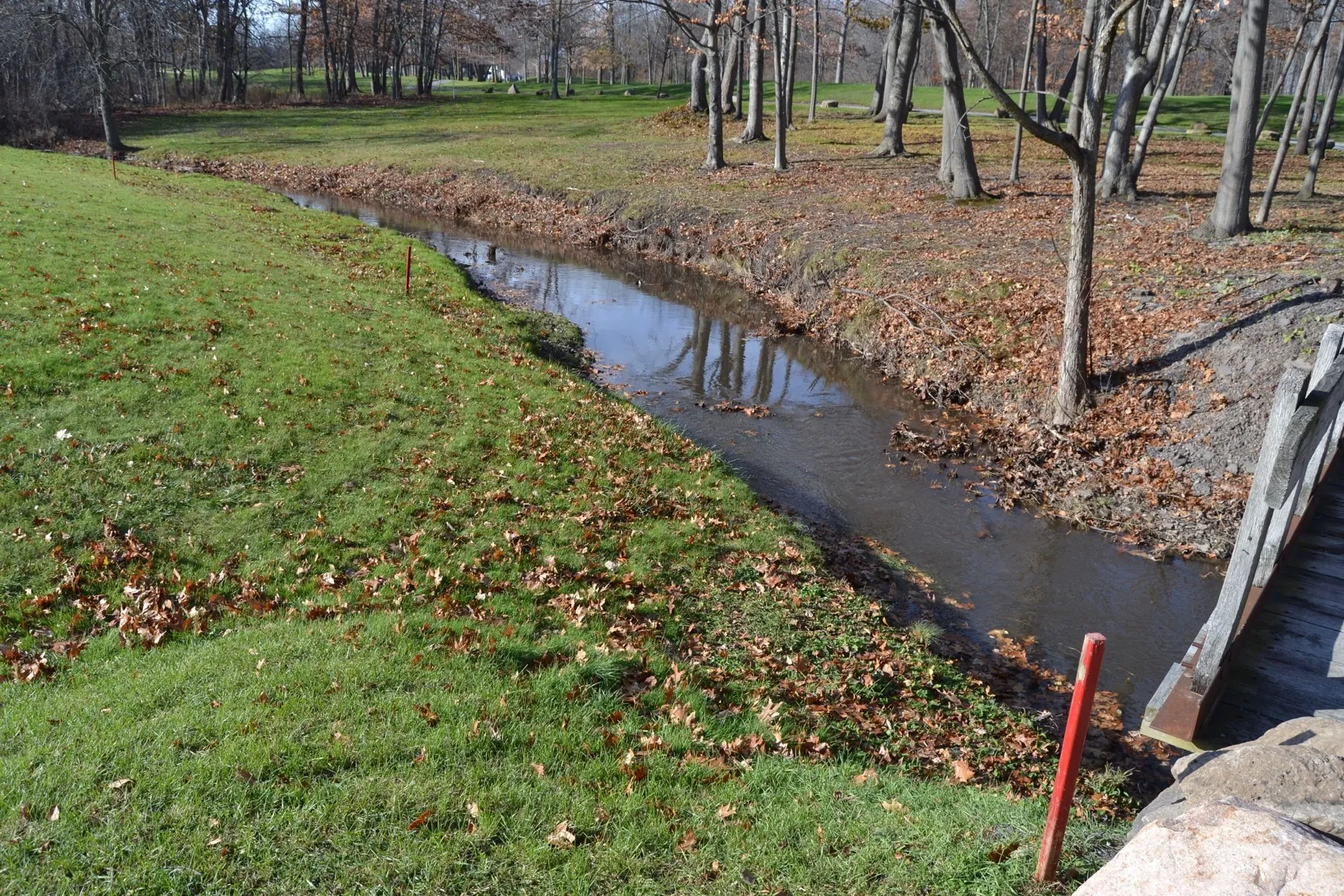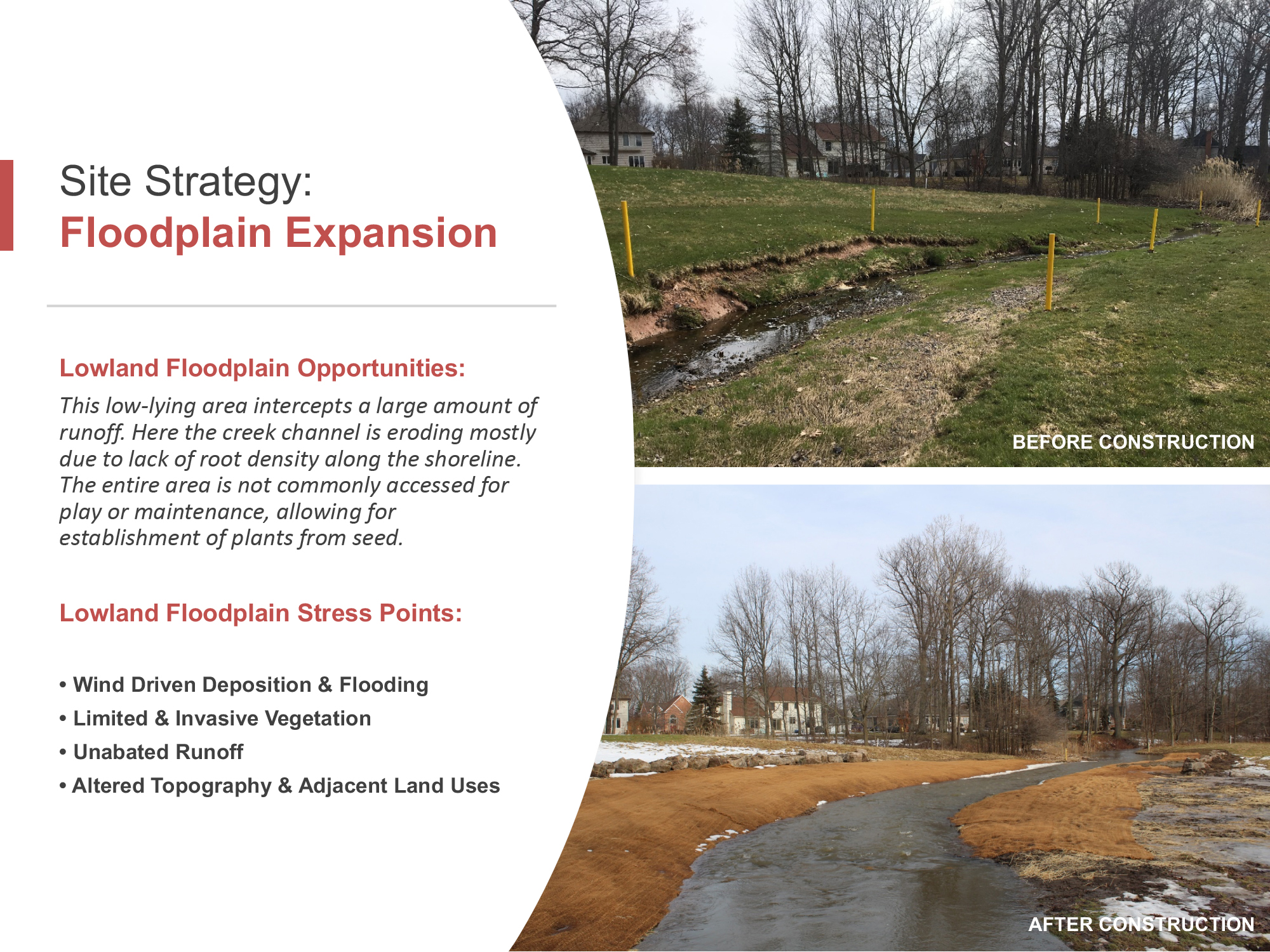Restoration, access, and education at River Oaks Golf Club.
Reducing nonpoint source pollution while improving fish and wildlife habitat to holistically increase resiliency of the Spicer Creek waterway.
Spicer Creek Water Quality
Constructed in 2019 and completed in 2020,this project focused on implementing an innovative design-management strategy on the property of the River Oaks Golf Club to improve water quality and ecological conditions along Spicer Creek, a major tributary to the Niagara River.
Along previously steep banks of the irrigation pond, erosion was addressed through regrading and installation of native plants, live stakes, and salvaged boulders.
Step-pools were also created in upland areas to slow, treat, and capture sediment from rainwater runoff and snow melt. Thousands of in-water plugs were installed to further protect banks, treat runoff, and create valuable habitat. In total, two-acres and 5,280 linear feet of shoreline were restored, while installing 7,622 plants.
Buffalo Niagara Waterkeeper is focused on taking a holistic approach to revitalize waterways throughout the Grand Island area. This project along Spicer Creek strategically reduces inputs of sediment and contaminated runoff that would otherwise compound downstream. Collectively these efforts generate more widespread and sustainable improvements to benefit Spicer Creek, the Niagara River, and the larger Great Lakes system.
Partners
US EPA Great Lakes Restoration Initiative (GLRI)
River Oaks Golf Club
Wendel Architecture & Engineering
Ecological Restoration Inc.
The Place
Work took place along a 2,500 foot stretch of creek through both a commercial golf course and residential development, making it critical to address sedimentation and nutrient loading, reduce non-point source pollution, improve fish and wildlife habitat, and increase structural integrity of the riparian zone.
Key features of the project included: Shoreline Expansion & Revegetation:
Installation of a submerged “sill” beyond the existing shoreline allowed establishment of a planting shelf to extend and stabilize the shoreline. The course was framed with groupings of vegetation and trees, making sure to keep the field of play open. A terraced mowing regime was also adopted with a third cut only occurring once yearly nearest shoreline areas.
Stormwater Capturing Seasonal Step Pools

Before

After
An out of play area directly downhill from the driving range provided an opportunity to install more permanent ‘Step Pool’ and ‘Check Dam’ collection systems to capture and slow runoff before it enters Spicer Creek. Each tier was planted with native species to help stabilize soils, absorb excess water, and withstand otherwise dry periods throughout the season.
Bank Revegetation & Lowland Floodplain Expansion

Before

After
Native plantings throughout the lower lying golf course areas focused on maintaining open sight lines while also providing seasonal interest and helping to slow runoff. Dense native planting also helps diversify the seed bank, shade out invasive species, and stabilize newly graded creek banks. Softening the banks along the upper reaches of the creek allowed for reconnection to adjacent floodplains so seasonal high-water can flow into and be absorbed by the adjacent floodplain habitat.
”The innovative nature of this project will serve as a model that can be replicated in order to improve water quality conditions in other communities
Nathan D. McMurrayTown Supervisor of Grand Island












